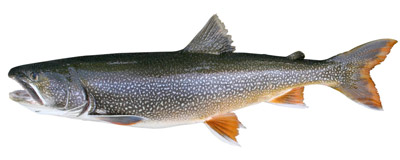Shedd Aquarium

Back to Shedd Aquarium
Back to Shedd Aquarium
It's a fish eat fish world
A food web, which tells the story of what is eating what, is a complex and delicate system. Remove a few species here or add new ones there and the whole thing could be rearranged or even collapse. For example, a dip in the amount of phytoplankton in Lake Michigan means fewer meals for small invertebrates, forcing small fish to compete for less food, which in turn leaves large predatory fish with a dwindling buffet. When new species are introduced, they can nab nutrition from animals that share their diets, sometimes consuming so much that native species are forced to either change their diets or die.
A water body as large and diverse as Lake Michigan has a complex food web. Most food web studies have focused on open waters. Less is known about what is eating what in nearshore waters, but it is clear that available food and connections between species are different in shallow water. The nearshore waters are a tough neck of the woods. There, invasive species like the quagga mussel, round goby, and water flea are more likely to thrive. In fact, these and other invaders have already depleted food supplies and crowded out several native species. Shallow habitats are also more vulnerable to pollution and changes in land use.
See what Great Lakes researchers are doing to understand the nearshore food web.
A water body as large and diverse as Lake Michigan has a complex food web. Most food web studies have focused on open waters. Less is known about what is eating what in nearshore waters, but it is clear that available food and connections between species are different in shallow water. The nearshore waters are a tough neck of the woods. There, invasive species like the quagga mussel, round goby, and water flea are more likely to thrive. In fact, these and other invaders have already depleted food supplies and crowded out several native species. Shallow habitats are also more vulnerable to pollution and changes in land use.
See what Great Lakes researchers are doing to understand the nearshore food web.
